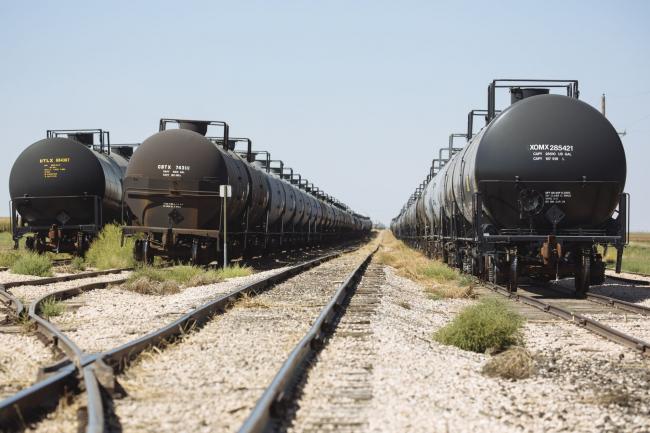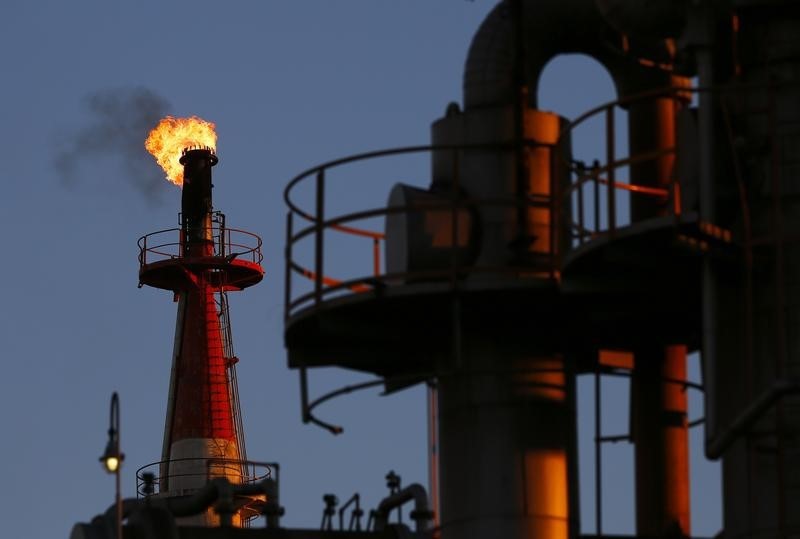(Bloomberg) -- Oil edged higher but pared earlier gains as the risk of renewed lockdowns crimping demand in the near-term restrained a vaccine-driven rally.
Futures in New York closed slightly higher Wednesday, retreating from an earlier two-month intraday high. In addition to Monday’s vaccine news, the market is finding some support with OPEC and its allies zeroing in on a delay to next year’s planned oil-output increase of three to six months. The organization earlier cut estimates for the amount of crude it will need to provide in the coming year.
Still, virus cases from Europe to the U.S. continue to rise. Tougher restrictions in New York and record U.S. hospitalizations provided more warning signs of growing demand risks as the world awaits a vaccine rollout. At the same time, Libya boosted oil output to more than 1.1 million barrels a day, inching closer to the level it was producing at before the country’s civil war all but shut down its energy industry in January.
The renewed restrictions “are a reminder that despite all the optimism that a vaccine will help to spur petroleum demand, near-term demand is still challenged,” said Andrew Lebow, senior partner at Commodity Research Group. “We still have lockdowns in western Europe and there has to be concerns about potential lockdowns here in the U.S., at least targeted ones.”
Oil futures pushed higher this week following progress on a potential coronavirus vaccine and further signs OPEC+ may delay its planned output increase in January. Expectations for a decline in U.S. crude and refined products supplies are also helping support prices. The industry-funded American Petroleum Institute reported draws of over 5 million barrels each for both crude and distillate inventories. The U.S. government will release its weekly inventory tally on Thursday.
The surge in headline prices has been accompanied by sharp moves in the forward curve. The discount on front-month Brent versus contracts three months out has shrunk to the smallest gap -- known as “contango” -- since July.
“The massive moves we’ve seen in the spread market are really from what had happened earlier this week with the Pfizer (NYSE:PFE) announcement,” said Tariq Zahir, managing member of the global macro program at Tyche Capital Advisors LLC. “People are saying, ‘Look demand is going to return, you have a vaccine out there, so let’s buy the spreads.’”
Early findings on a vaccine showed it protected most people from Covid-19, but it’s likely to take some time to roll out if it proves effective. In the meantime, refining margins remain at decade-lows for this time of the year, leaving refiners that contribute to crude consumption in a precarious position even with a potential vaccine in sight. The combined refining margin for gasoline and diesel slipped over 7% to below $9 a barrel on Wednesday.
“We’re basically trading on perceptions of where data’s going to be six months from now,” said Bob Yawger, head of the futures division at Mizuho Securities. “It has no basis in reality at the moment.”
The next major event for the market is the OPEC+ meeting at the end of the month, with Vitol Group predicting a major draw on excess global inventories if the alliance delays a planned easing of cuts.
©2020 Bloomberg L.P.

